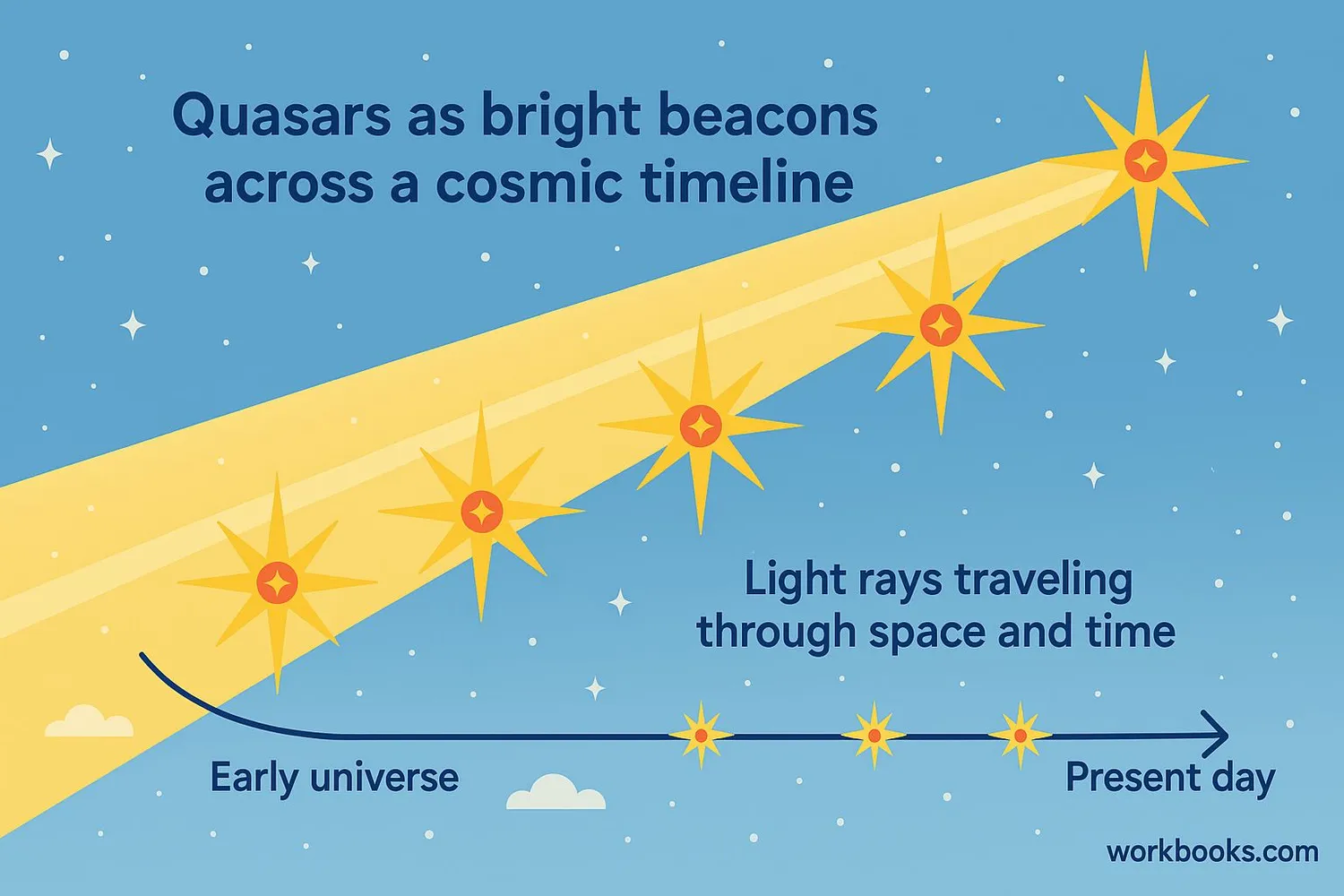Quasars: Cosmic Powerhouses - Definition, Examples, Quiz, FAQ, Trivia
Discover the brightest objects in the universe!
What is a Quasar?

A quasar is a special kind of object in space that shines brighter than an entire galaxy! The name "quasar" comes from "quasi-stellar radio source" because they look almost like stars through telescopes.
Quasars are actually the extremely bright centers of distant galaxies. At the heart of every quasar is a supermassive black hole - an object with gravity so strong that nothing, not even light, can escape it. But how can something that traps light be so bright? The secret is what happens just outside the black hole!
Cosmic Fact!
The brightest quasar discovered so far shines with the light of 600 trillion suns! That's more light than our entire Milky Way galaxy.
How Quasars Work

Quasars get their incredible power from supermassive black holes and the material swirling around them. Here's how this amazing cosmic engine works:
Gravity Well
A supermassive black hole sits at the galaxy's center
Accretion Disk
Gas and dust swirl around the black hole at incredible speeds
Friction & Heat
Material in the disk rubs together, heating to millions of degrees
Bright Light
The hot disk glows brighter than the entire galaxy
Relativistic Jets
Some material shoots out in powerful beams at nearly light speed
The size of these black holes is mind-boggling! A typical quasar's black hole might have a mass between millions to billions of times our Sun's mass. For comparison, the black hole at the center of our Milky Way is about 4 million solar masses - big but not active enough to make a quasar.
Time Travel with Light!
When we look at quasars, we're seeing them as they were billions of years ago because light takes time to travel across space.
Why Quasars Matter

Quasars are more than just fascinating space objects - they help scientists understand our universe! Here's why they're so important:
Cosmic Time Capsules
Help us study the early universe since we see them as they were long ago
Measuring the Universe
Act as "lighthouses" to measure cosmic distances and expansion
Galaxy Evolution
Show how galaxies and their central black holes grow together
Quasars help astronomers answer big questions:
• How do supermassive black holes form?
• How did galaxies evolve in the early universe?
• What is the universe made of?
• How fast is the universe expanding?
They're also natural laboratories for studying physics under extreme conditions we could never recreate on Earth!
Quasar Quiz
Test your quasar knowledge with this cosmic quiz! Answer all 5 questions to see how much you've learned.
Frequently Asked Questions
Here are answers to some common questions about quasars:
Space Trivia
Discover some amazing facts about quasars and space!
Cosmic Energy
The most powerful quasars can emit thousands of times more energy than our entire Milky Way galaxy, all from a region smaller than our solar system!
Discovery Story
The first quasar was discovered in 1963 by astronomer Maarten Schmidt. He was puzzled by a "star" with a spectrum that didn't match any known elements, until he realized it was actually common elements but with extreme redshift!
Size Comparison
If a typical quasar's accretion disk were shrunk to the size of a dime, our entire solar system would be smaller than a human hair placed next to it!
Ancient Light
The light from distant quasars has been traveling through space for so long that when it began its journey, Earth didn't even exist yet! We're seeing cosmic history when we observe them.


